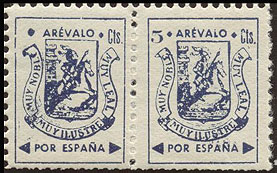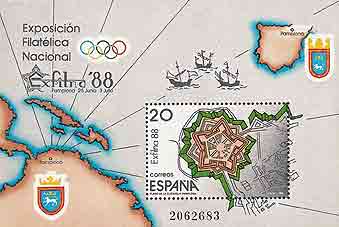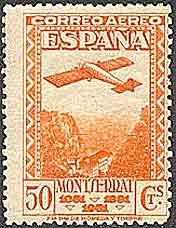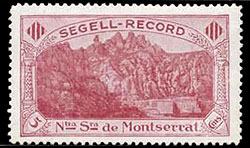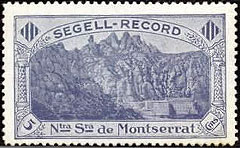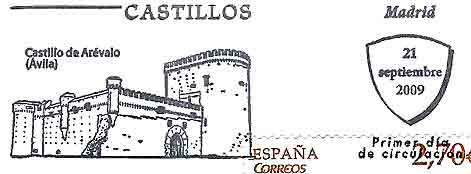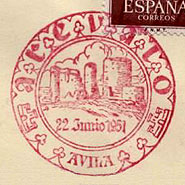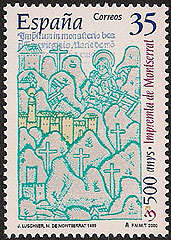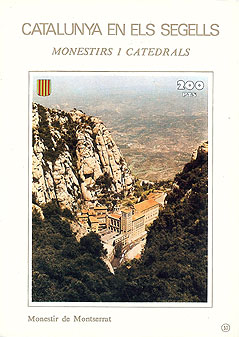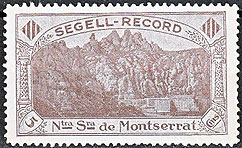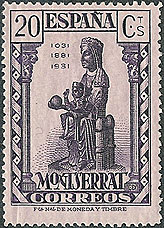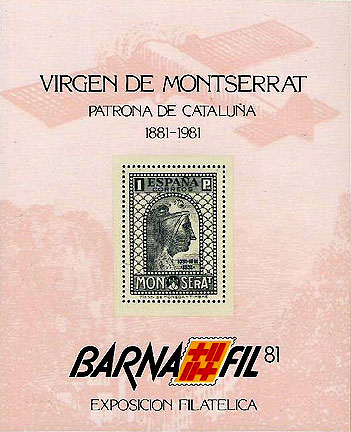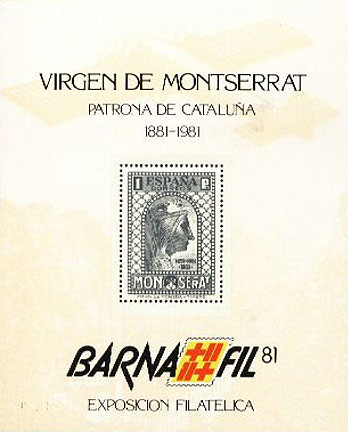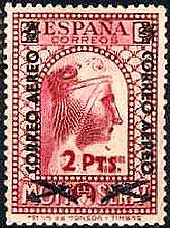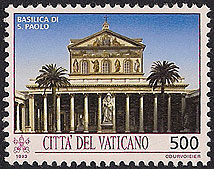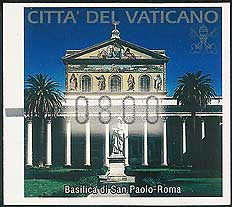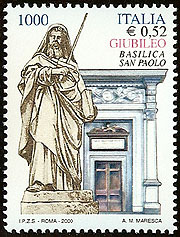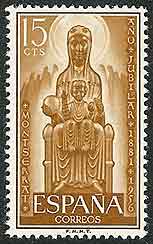
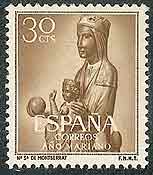
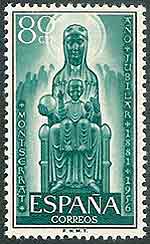
SPAIN, 1956, both the statue and the jagged mountains, Scott 849
and 851
and between them SPAIN, 1954, Scott 807

VENEZUELA, 1991, the 5th centenary of the birth of St. Ignatius,
Scott 1445d
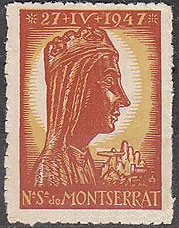


SPAIN, 1947, a cinderella for the Enthronement of Our Lady in 1947
on her feast day April. 27,
considered the first move toward civil reconciliation after the war.
SPAIN, 1956, cinderellas for the 75th anniversary of the Black
Madonna being proclaimed patron saint of Catalonia by Pope Leo XIII.
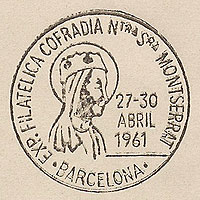
SPAIN, 1961 the Diamond Jubilee of the Confraternity of Our Lady
of Montserrat
marked by a special philatelic exposition and cancel
Manresa
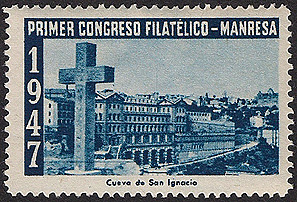
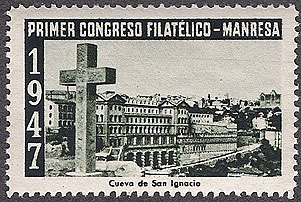

Spanish, 1947, three cinderellas commemorating the same First Philatelic
Congress at Manresa
featuring the retreat house and the interior of the cave at Manresa

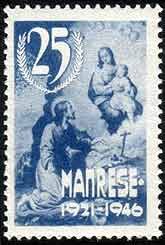
Two cinderellas, one issued by the Charity Secretariat of the Railway Brotherhood
of St. Ignatius Loyola,
and a Canadian one marking the 25th anniversary of Villa
Manrèse, are
based on a drawing, Ignatius Writing the Spiritual Exercises at Manresa, by Fr. Francisco de Paula Morell SJ, as is the one below.

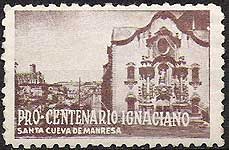

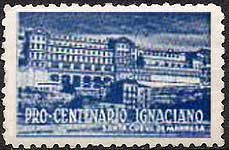
Spanish, for the Ignatian centenary these four cinderellas show four scenes
of the Holy Cave at Manresa
Fr. Morell's painting of Ignatius, the entrance to the church, the cave,
the sanctuary facing the river.
The set of four vignettes was printed by Heraclio
Fournier, SA, in Vitoria, the Basque Country, Spain in each of the
four colors shown.
Santa
Maria del Mar, Barcelona

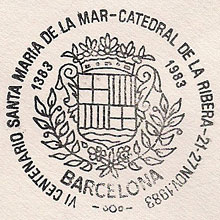
SPAIN, 1983, Scott 2351, featuring the Church of Nuestra Señora
del Mar (Our Lady of the Sea) in Barcelona, Spain where Ignatius used to
beg.
SPAIN, 1983, special cancel for the 6th centennial of the church
University
of Alcala

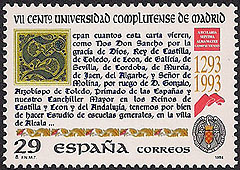
SPAIN, 1966, University of Alcalá de Henares, Scott 1360
SPAIN, 1994, for the 7th centenary of the University of Alcalá
de Henares,
Scott 2777

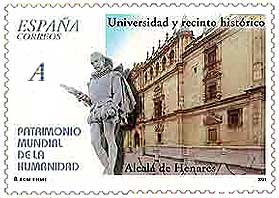
SPAIN, 2001, Cultural Heritage of Humanity, Scott 3130L, with a special
show cancel (below)
3130L was used imprinted on a postal card, with an "A" value

At 33 years of age and determined to study for the priesthood, Ignatius
went back to school. He started studying Latin grammar with young boys
in Barcelona, and after two years moved the University of Alcala. Ignatius
would gather people to explain the Gospels and teach them how to pray.
He was quickly arrested by the Inquisition and thrown into jail for 42
days. He was warned not to teach others, and so quickly moved on to the
University of Salamanca.
University
of Salamanca and St. Stephen's Monastery


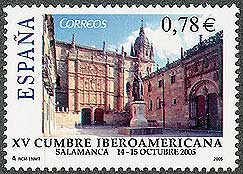
SPAIN, 1936, 1946, and 2005, Scott 626, 745, 3375
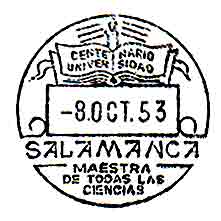

SPAIN, 1953, special cancel for the anniversary of the University
COLOMBIA, 1955, the 7th centenary of the University, Scott C282

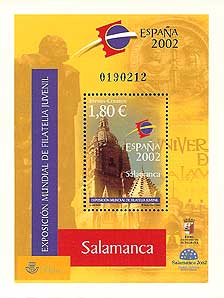
DOMINICA, 1999, millennium sheetlet, Scott 2185f
SPAIN, 2002, World Youth Philatelic Exposition, note the university
seal in the background, Scott 3147
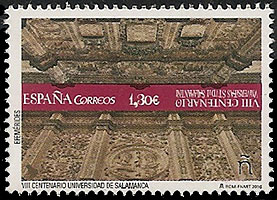
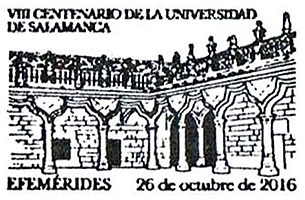
SPAIN, 2016, an issue celebrating the 800th centenary of the University of Salamanca, and its FDI cancel
Ignatius with a few companions went to the University
of Salamanca in the summer of 1527. He confessed there to a friar
of the Monastery of St. Stephen, and some ten days later was invited by
his confessor to dinner at the monastery. There he was questioned about
his teaching by the subprior and a couple of others, who then locked him
in the monastery for three days and went off and arranged to have him
jailed and tried by the Inquisition. Ignatius said he continued to speak
to the other monks, some of whom came to agree and sympathize with him.
He was eventually acquitted, but decided to move on to the University Paris.
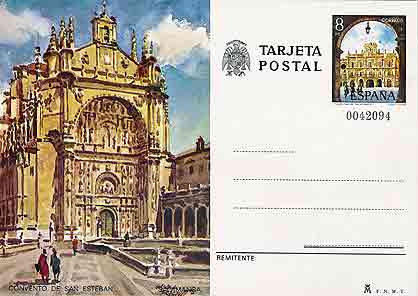
SPAIN, 1979, postal card with a cachet showing the Dominican Convento
de San Esteban in Salamanca, Edfil 120
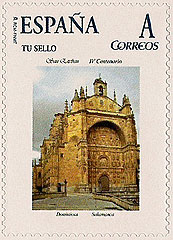
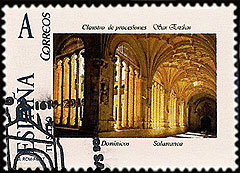
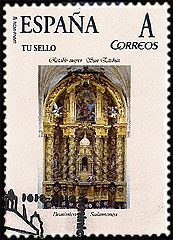
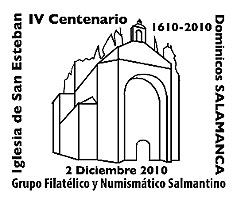
SPAIN, 2010, three personalized stamps and a special cancel for
the 4th centenary of the Dominican Church of San Esteban
showing the church, the cloister, and the main altar and altarpiece.
While this was not the church that St. Ignatius knew, it was built in
the same place as the smaller church and convent of his day.
The
College of St. Barbara, Paris


FRANCE, 1960, 5th centenary of the College of Saint Barbara
Ignatius' college at the University of Paris, Scott 983 and its FDI cancel
The College of Saint Barbara at the University of Paris is where St.
Ignatius lived and studied with his roommates Peter
Faber and Francis Xavier from 1528 to 1535. More
Montmartre,
Paris
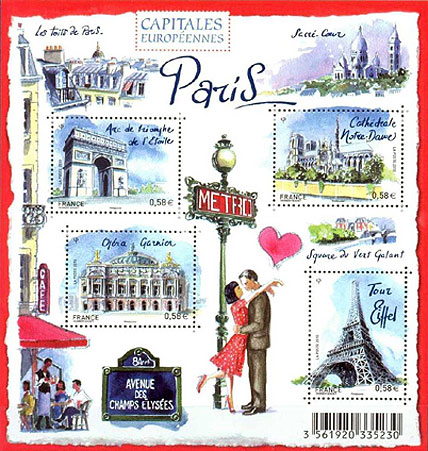
FRANCE, 2010, the hill of Montmartre is seen in the upper right
corner of this mini-sheet.
After receiving their degrees from the University of Paris, Ignatius
and his first companions went up the hill of Montmartre on the 15th of
August 1534, to a crypt beneath the Church of Saint Denis, now Saint Pierre
de Montmartre. It is lesser-known than the other church on Montmartre,
the Sacré-Cœur Basilica built in the 19th century immediately
to the south. Historically, however, Saint Pierre, the oldest church in
Paris, has the greater claim to fame. Here the vows were taken that led
to the founding of the Society of Jesus. Peter Faber, the only priest
among them, celebrated Mass and the first companions took their vows together.
Other stamps and postal stationary also show the basilica and the hill,
though none that I have found show Saint Pierre, e.g.: Cambodia in 1990,
France in 2002, Guinea in 2008.
The
Hermitage of the Magdalene, Azpeitia (Guipúscoa)
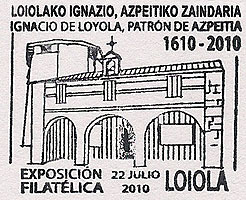
SPAIN, 2010 special cancel for an Ignatian Philatelic Exposition,
held in the Sanctuary at Loyola, 22 July -1 August
This special show cancel shows the Hermitage of the Magdalene in Azpeitia.
St. Ignatius returned there from April to July 1535 to recover his health
in his native land at the advice of doctors in Paris. He preached there
and taught catechism, and lived during this time at the Hospital of Mary
Magdalene in front of the hermitage, not wanting to accept the invitation
of his sister-in-law, María Magdalena Araoz, to stay at the family
castle. In early May of 2014, the old hospital was reestablished by the
Society of Jesus, and at the dedication Mass Fr. Juan José Etxeberria,
provincial of the Loyola Province, declared that "we see Ignatius
living in the hospital. He begged for food and alms at the doors of his
relatives and neighbors. He brought the proceeds back to the hostel, to
feed and clothe the poor and sick. He also dedicated himself to preaching
and teaching, and he invited people to reform their lives. This is a brief
summary of the apostolic charisma which would lead to the Society of Jesus."
Santa
Maria della Salute, Venice
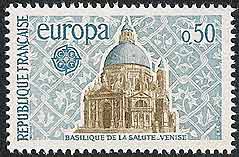
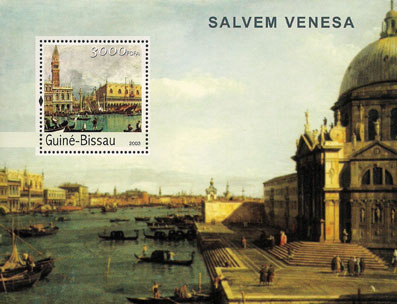
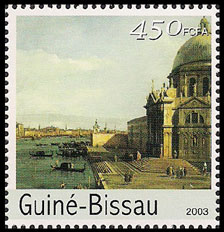
FRANCE, 1971, Scott 1303
GUINEA BISSAU, 2003, the basilica is on the souvenir sheet and the last stamp
of the mini-sheet of 6
The Basilica of Our Lady della Salute in Venice was built on the foundations
of an old hospital. Ignatius and most of his first companions were ordained
priests in the church attached to this hospital on the feast of St. John
the Baptist, June 24, 1537.
Saint
Mary Major, Rome

VATICAN CITY, 1949, St. Mary Major, Scott 130
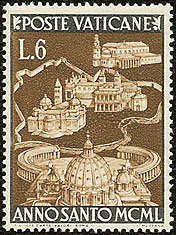
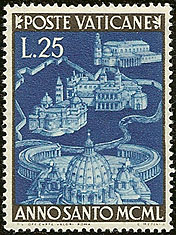
VATICAN CITY, 1950, the four basilicas, St. Mary Major the third
from the top, Scott



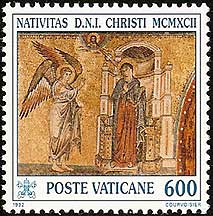
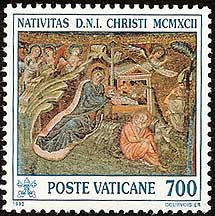
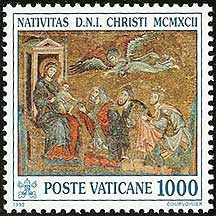
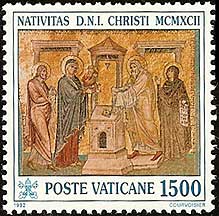
VATICAN CITY, 1975, mosaics from St. Mary Major: Christ, Peter
and Paul, Scott 565-67
VATICAN CITY, 1992, mosaics from St. Mary Major: Annunciation,
Nativity, Adoration of the Magi, Presentation, Scott 912-915


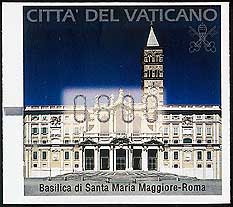
VATICAN CITY, 1993 and 2000, Scott 919 and 1139
The last, imperforate stamp, is available only from stamp machines
After his ordination, Ignatius waited 18 months to celebrate
his first mass, which took place on Christmas Day 1538, in the Chapel
of the Manger in Saint Mary Major Basilica in Rome.
San
Pietro in Montorio, Rome


ITALY, 1971, Scott 1035
SPAIN, 1974, Scott 1810
In April 1541, St. Ignatius of Loyola was elected superior general
of the Society of Jesus. He asked that the election be repeated, and was
again elected. His confessor, Fr. Teodosio da Lodi OFM, lived in the monastery
adjacent to this church of San
Pietro in Montorio (St. Peter the Apostle on the Golden Hill), and
St. Ignatius came here for three days of prayer and meditation. After
receiving advice from his confessor he decided to accept the result of
a third election, and was duly elected on April 19. The tempietto or little temple was build by Bramante, the first Renaissance building
in Rome, at the commission of the Spanish monarchs. It is believed to
be the site where the Apostle Peter was crucified. Ignatius often said
Mass here, perhaps because of his devotion to St. Peter.
Saint
Paul Outside-the-Walls, Rome

